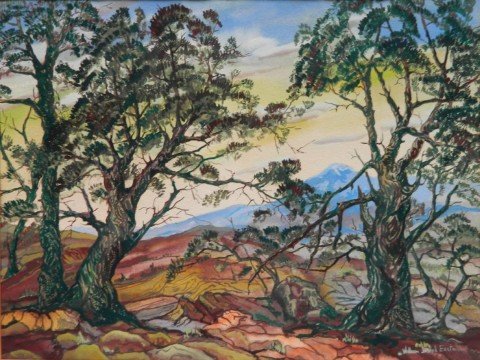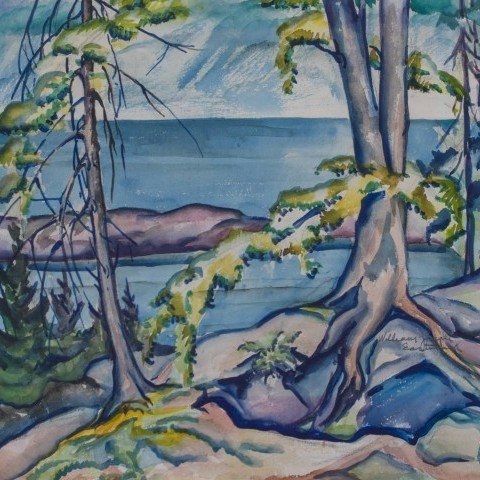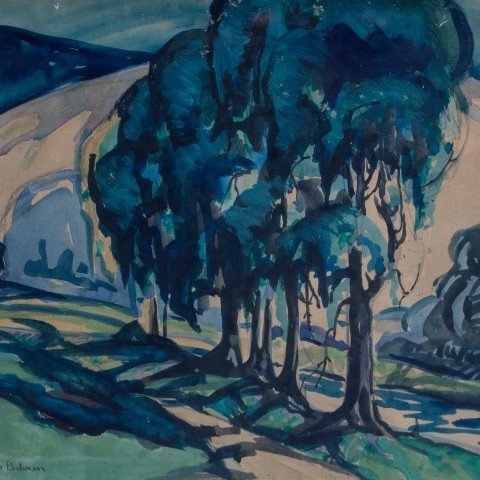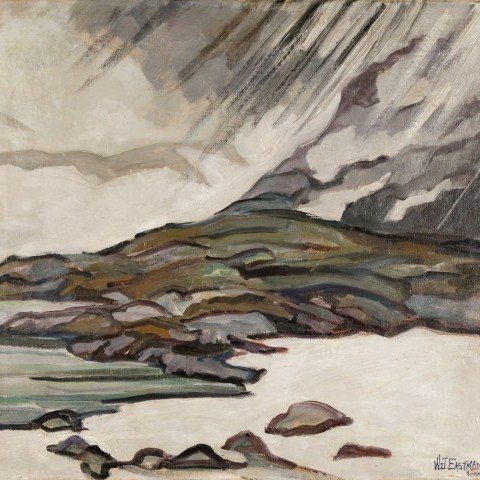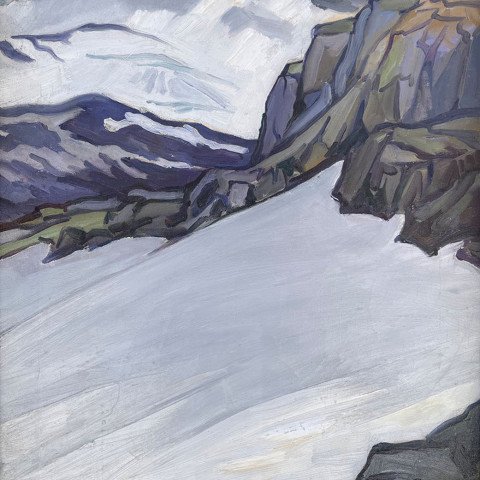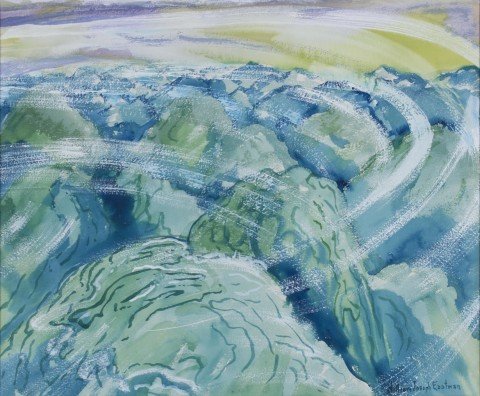Born in Cleveland in 1881, William Eastman attended the Cleveland School of Art, graduating in 1912. After which he moved to New York and briefly studied at the Art Students League. The following year he moved back to Cleveland to become an instructor at the Cleveland School of Art, a position he held until his death.
He had his first solo exhibition in 1911 at the studio he shared with Walter Heller. Around 1915 Eastman began experimenting with gold and silver-leaf grounds in paintings based on "principles of pure design." He exhibited at the annual May Shows at the Cleveland Museum of Art (1919-1950). On sabbatical from the Cleveland School of Art in 1922, he studied at the Academie Julian in Paris and spent the following year painting in France, Spain, Italy, Norway, Sweden, and Denmark. One of the many trips in Europe he would take throughout his lifetime.
He directed the Eastman-Bolton Gallery from 1926-1938, a decorative-design firm that he cofounded. In 1931 he was elected president of the Cleveland Society of Artists. The following year he organized the city's first artist's Curb Market to stimulate sales of local artists' work. During the 1930's and 1940's his paintings appeared in solo exhibtions in Cleveland, Akron, Columbus, and the Addison Gallery of American Art in Andover, Massachussetts.
In the summer of 1939 he made the first of many painting trips to the American West and Mexico. Returning from one of these trips in 1950, Eastman died of a heart attack. The Cleveland Institute of Art organized a memorial exhibition of his work the following year.
Source: Transformations in Cleveland Art (1796-1946) - Robinson and Steinberg

